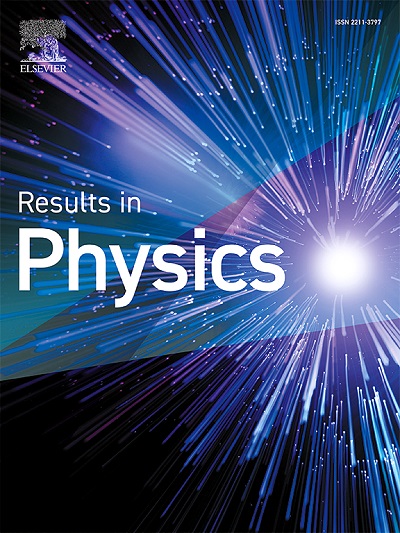量子尺寸对Eu2MnHfO6纳米颗粒磁性的影响:表面体积比、磁阻塞和磁相变的作用
IF 4.6
2区 物理与天体物理
Q2 MATERIALS SCIENCE, MULTIDISCIPLINARY
引用次数: 0
摘要
本文研究了溶胶-凝胶法制备Eu2MnHfO6 (EMHO)纳米粒子(NPs)并在500、800和1000℃下退火后的量子尺寸效应。XRD证实,所有样品均存在立方Fd3′m结构,NP尺寸从7.4 nm增加到23.8 nm。FTIR光谱显示,较小的NPs表现出量子点(QD)的特征,由于表面配位破坏,Mn/Hf - o - Mn/Hf键变弱。磁性测量揭示了尺寸依赖行为:较小的NPs表现出表面驱动的现象,如阻挡温度(TB)和表面自旋效应(TSE),而较大的NPs (23.8 nm)表现出与不同的nsamel (TN)和Curie (TC)温度相似的体状超交换相互作用。在最小和最大的粒子中发现局部磁不均匀性,表明格里菲斯相(GP),与TC重叠。这些新结果强调了表面与体积比如何影响磁跃迁,支持了修改的居里-魏斯定律,该定律通过MNPs的配位变化区分了表面和体积效应。本文章由计算机程序翻译,如有差异,请以英文原文为准。
Quantum size effects on magnetism in Eu2MnHfO6 nanoparticles: Role of surface-to-volume ratio, magnetic blocking, and magnetic phase transitions
In this paper, we investigate the quantum size effects on Eu2MnHfO6 (EMHO) nanoparticles (NPs) synthesized via sol–gel and annealed at 500, 800, and 1000 °C. XRD confirmed a cubic Fd3̅m structure across all samples, with NP sizes increasing from 7.4 nm to 23.8 nm. Smaller NPs displayed features of quantum dots (QD) and weakened Mn/Hf–O–Mn/Hf bonding due to broken surface coordination, as seen in FTIR spectra. Magnetic measurements revealed size-dependent behaviour: smaller NPs exhibited surface-driven phenomena like blocking temperature (TB) and surface spin effects (TSE), while larger NPs (23.8 nm) showed bulk-like super-exchange interactions with distinct Néel (TN) and Curie (TC) temperatures. Local magnetic inhomogeneities indicating a Griffiths phase (GP) were found in the smallest and largest particles, overlapping with TC. These novel results underscore how surface-to-volume ratios influence magnetic transitions, supporting a modified Curie–Weiss law that distinguishes surface and volume effects with coordination variations in MNPs.
求助全文
通过发布文献求助,成功后即可免费获取论文全文。
去求助
来源期刊

Results in Physics
MATERIALS SCIENCE, MULTIDISCIPLINARYPHYSIC-PHYSICS, MULTIDISCIPLINARY
CiteScore
8.70
自引率
9.40%
发文量
754
审稿时长
50 days
期刊介绍:
Results in Physics is an open access journal offering authors the opportunity to publish in all fundamental and interdisciplinary areas of physics, materials science, and applied physics. Papers of a theoretical, computational, and experimental nature are all welcome. Results in Physics accepts papers that are scientifically sound, technically correct and provide valuable new knowledge to the physics community. Topics such as three-dimensional flow and magnetohydrodynamics are not within the scope of Results in Physics.
Results in Physics welcomes three types of papers:
1. Full research papers
2. Microarticles: very short papers, no longer than two pages. They may consist of a single, but well-described piece of information, such as:
- Data and/or a plot plus a description
- Description of a new method or instrumentation
- Negative results
- Concept or design study
3. Letters to the Editor: Letters discussing a recent article published in Results in Physics are welcome. These are objective, constructive, or educational critiques of papers published in Results in Physics. Accepted letters will be sent to the author of the original paper for a response. Each letter and response is published together. Letters should be received within 8 weeks of the article''s publication. They should not exceed 750 words of text and 10 references.
 求助内容:
求助内容: 应助结果提醒方式:
应助结果提醒方式:


